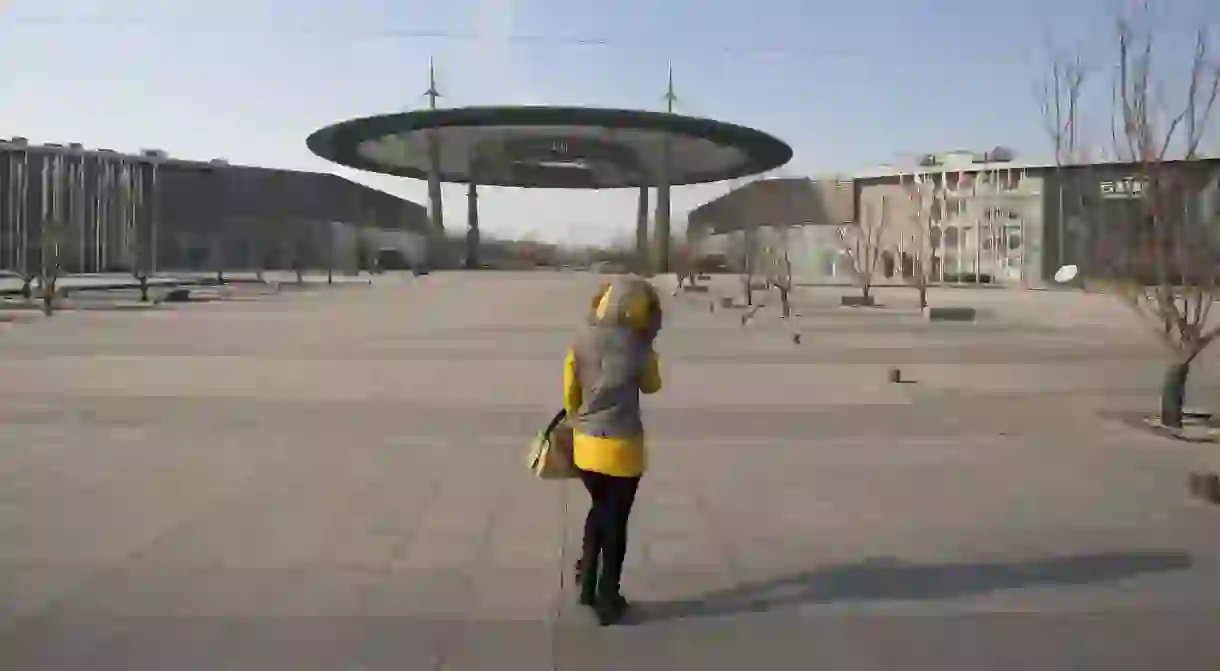How Zhongguancun Became China’s Silicon Valley

Zhongguancun in Beijing, an imperial-era graveyard, has resurrected itself as a cradle for tech unicorns in the new millennium.
Since China swung its doors open to the world 40 years ago, the country has become one of the top technology powerhouses in the world – and Zhongguancun is its engine room. Once a nondescript corner of the Haidian district in Northwest Beijing, the area is now among the planet’s leading incubators of ideas, a digital ecosystem that sees 80 start-ups spring up every single day. The imperial-era burial ground has reinvented itself as China’s Silicon Valley in the 21st century, and this is its story.

From eunuch graveyard to unicorn cradle
Before the People’s Republic of China existed, Zhongguancun didn’t, either – the area was a mostly unoccupied patch of the Haidian district until the 1950s. The Qing Dynasty (1644–1912) reportedly used the terrain for burying their eunuchs after they’d served the imperial court, a tradition dating back centuries.
In the late 20th century, however, the land became fertile soil for entrepreneurs. And today, Zhongguancun is home to more than 10,000 tech enterprises employing half a million technicians, which is an awful lot of brainpower in one place. An awful lot of money, too – the neighbourhood is home to nearly half of China’s 100 or so unicorns, meaning start-ups valued at $1 billion.

The godfather
The godfather of China’s Silicon Valley was Chen Chunxian, a Sichuan physicist who visited the original Silicon Valley on a state-sponsored trip to California in 1979. He returned to found the non-government Advanced Technology Service Association in Zhongguancun in 1980, and although the company didn’t last long, it laid the foundations for what was to come.
As the economic reforms of 1978 invited foreign investors to pump money into China, Zhongguancun quickly became the country’s high-tech hub. Some began selling consumer goods on this ‘electronics avenue’, while others started companies of their own. Zhongguancun exploded. Even the government saw its potential, designating the area the ‘Beijing High-Technology Industry Development Experimental Zone’ in 1988. A simpler nickname stuck: China’s Silicon Valley.

The brains
Every technology hub needs a production line of brainiacs – that’s where Zhongguancun’s proximity to Beijing’s best universities comes in handy. Peking University and Tsinghua University are China’s two most prestigious colleges, while the Chinese Academy of Sciences is a world-class think tank boasting 60,000 researchers devoted to technological progress.
There are more than 200 research institutes and universities in the vicinity, as well as at least 10 technology parks. Put so many nerds, geeks and geniuses in one place and they’re bound to come up with some game-changing ideas.

The big bucks
Zhongguancun owes its reputation as China’s Silicon Valley to the long list of companies that began life in this little patch of turf between the Third and Fourth Ring Roads in the Haidian district.
The Chinese Academy of Sciences has given birth to hundreds of trailblazing companies, most famously Lenovo, the computer giant that bought out IBM in 2005. Peking University spawned tech, finance and pharmaceutical all-rounder Founder Group, while Baidu was also born here before becoming one of the biggest AI companies on the planet.
In recent years, Zhongguancun has been infused with an increasingly international flavour, becoming a self-styled ‘workshop for the world’. Global companies flock to this special economic zone for its tax breaks, subsidies and express permanent residency visas for new talent.
Google, Sony and Intel all have their Chinese headquarters here, while the neighbourhood also houses Microsoft Research Asia, the lab that’s given the world more than 300 technological breakthroughs on everything from Excel to Xbox.
See and do
Besides gawking at all the glittering offices, the most interesting thing for visitors to do in Zhongguancun is check out the markets. Stallholders and small businesses were a big part of this fledgling tech hub when it began in the early 1980s, and they still are today.
Unlike Beijing’s other markets, these ones don’t just hawk tacky tourist souvenirs and knock-off T-shirts – but that doesn’t mean you shouldn’t haggle over the price. Head to Dinghao Top Electronics City for consumer electronics at bargain prices, Zhonghai Electronics Market for second-hand goods and Zhongguancun Plaza Shopping Mall to see the largest underground plaza in Beijing.














